The Praça do Comércio (commerce square) was the centerpiece of the reconstruction that took place after the earthquake of 1755 had reduced Lisbon to rubble. Its main attraction is a monumental equestrian statue of king José I.
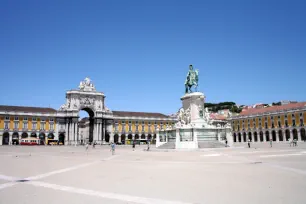
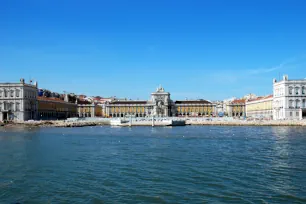
Over the last centuries numerous processions, festivities, concerts and even executions have taken place here. The square has also been the scene of historic events such as the double assassination on February 1908, when king Carlos and Luis Filipe – the heir to the throne – were assassinated here. And in 1974 thousands of people assembled on the square during the revolution that overthrew the dictatorial regime.
Palace Square
The square is commonly known as the Terreiro do Paço (Palace Square), for the sixteenth-century Ribeira Palace that stood here until it was destroyed by the devastating earthquake of 1755. The palace was one of the most impressive buildings in Portugal, decorated with many works of art and home to a large library containing more than 70,000 books.
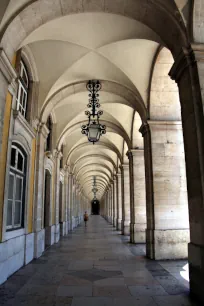
Shortly after the earthquake the marquis of Pombal, prime minister of king José I, organized the reconstruction of the city. The historic maze of streets near the palace was completely razed and a new orderly street grid was created.
As part of the reconstruction Pombal also planned the creation of a new large square, meant to rival Europe’s grandest squares. Eugénio dos Santos and his aide Carlos Mardel were responsible for the design of the new square, which was named Praça do Comércio. On one side it opens onto the Tagus river while the other sides are bordered by stately government buildings with beautiful arcades facing the square.
Statue of King Joseph I

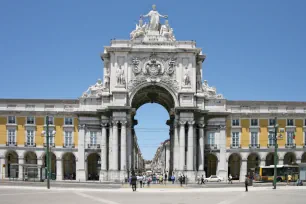
The centerpiece of the Praça do Comércio is the equestrian statue of José I (Joseph I), created by Joaquim Machado de Castro, one of Portugal’s most famous sculptors.
The bronze statue, inaugurated in 1775, shows the king on a horse trampling snakes. The statue is set on a monumental pedestal decorated with large sculpture groups and overlooks the majestic square.
Triumphal arch
Another impressive monument is the Arco da Rua Augusta, a triumphal arch that leads to the Rua Augusta, a beautifully paved pedestrianized street.
The arch was originally designed by Santos de Carvalho to celebrate the swift reconstruction of the city after the earthquake of 1755. Construction of the triumphal monument started in 1759 but work was halted soon after. The project was picked up again in 1843 when a new design by architect Veríssimo José da Costa was chosen.
Finally completed in 1873, the monumental arch shows the allegorical figure of Glory crowning Genius and Bravery. Below them are important historical figures and allegorical representations of the rivers Tagus and Douro.
Cais das Colunas
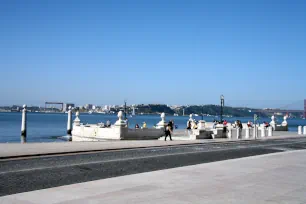
The Praça do Comércio is completely pedestrianized although it is bounded to the north and south by heavily trafficked roads.
Cross the street just south of the square to reach the Cais das Colunas (Columns Pier), a beautiful pier with a wide marble stairway that for centuries was the main entrance to the city. Dignitaries arrived here by boat and walked straight to the nearby palace. It is named for the two tall columns in front of the pier.
In 1997 the pier was dismantled due to the construction of an underground metro line but it was restored to its original appearance in 2008. The Cais das Colunas is often crowded with tourists enjoying wide open views over the Tagus river.

